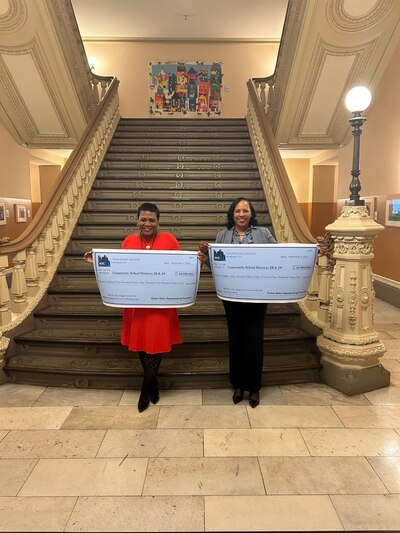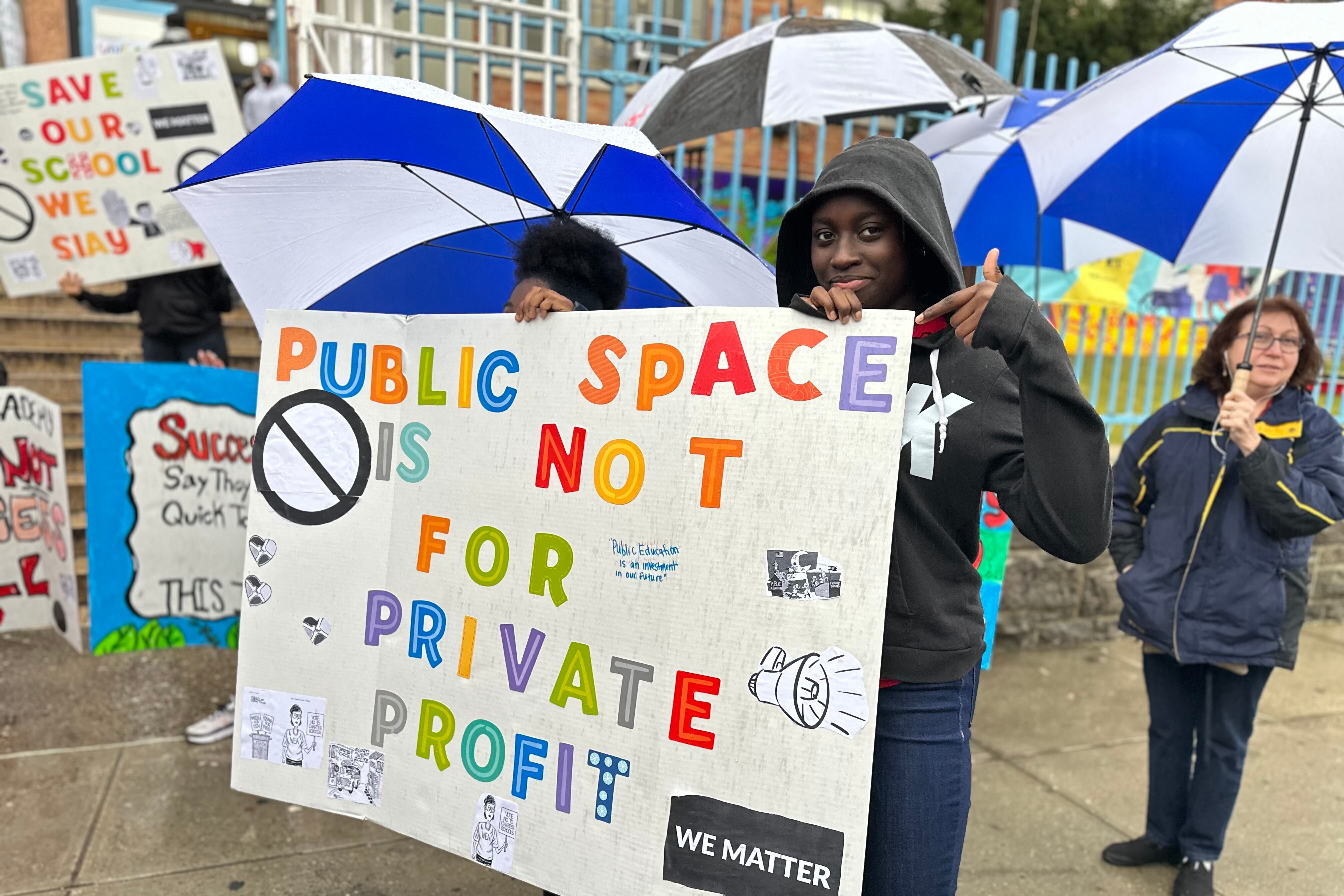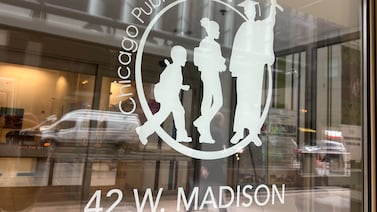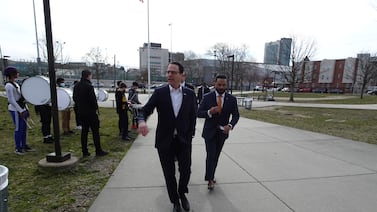Success Academy, New York City’s largest charter school network, is on an expansion tear, recently winning approval to move into buildings shared with other schools in Far Rockaway, Queens as well as in Sheepshead Bay, Brooklyn.
But mounting community resistance has halted three other proposals — in districts 28 and 29 in Queens and the Bronx’s District 11— which the department of education quietly pulled from the Panel for Educational Policy’s agenda before Tuesday’s scheduled vote.
The decision came “after hearing from community members throughout this entire process that the proposals would create significant challenges for the new schools and the existing co-located schools,” schools Chancellor David Banks said in a statement on Monday. “Being responsive to families, staff, and community input is a core pillar of this administration, and we welcome all voices to take part in these discussions.”
Under state law, charter schools are entitled to receive space from the education department or rental assistance. Banks said the city will continue to work with Success Academy to help them find “suitable” facilities for their new schools.
Roughly 1,100 New York City schools, or 66%, share campuses with other schools. About 10% of those are charters, according to data from the New York City Charter School Center.
Fears that Success Academy’s move could slow a turnaround effort
One of the Success Academy proposals would have opened an elementary school in a building in southeast Queens shared by two middle schools and a District 75 program, serving children with disabilities who need intensive support.
Principals at the two middle schools, M.S. 332 and M.S. 72, after sleepless nights of grant-writing last spring, had won a federal magnet grant in October sending nearly $2.5 million to each of their schools over five years. When they learned of the proposed Success Academy co-location, they feared they might not be able to meet the goals of their project, which was among 19 proposals across the country receiving windfalls.
As part of the grant, the two District 28 schools promised to beef up the rigor of their academic offerings. M.S. 72, also known as the Catherine & Count Basie Middle School, plans to integrate multimedia and performing arts. M.S. 332, known as the Redwood Middle School, will focus on leadership and STEM.

The schools must also increase enrollment about 5% each year over the grant’s duration. And now they must do that while meeting the new demands of a state law mandating smaller classes.
The education department had said there was room to spare in the building, despite objections from the schools and many in the community. According to education department projections based on its “Blue Book,” the building would only be operating at 70% to 79% of its capacity once the Success Academy elementary school is at full enrollment.
But Adriana Alicea, president of District 28’s President’s Council, toured the school, as did local elected officials, and saw little empty space. The District 75 students have gym class in the building’s locker room, and lunch for the three schools is spread over seven periods.
“We can’t force additional students into a building where there’s no space and then condemn New York City schools for failing,” Alicea said. “There’s no space for the children to succeed. There’s no space for them to grow.”
M.S. 72 Principal Ativia Sandusky took over the school in 2019, at the same time Tammy Katan-Brown took over the helm at M.S. 332. Both schools had long suffered from disinvestment, declining enrollment, and poor performance.
The two principals had worked together in Crown Heights, Brooklyn, with Katan-Brown sending many of her elementary school students to Sandusky’s middle school. They both moved to the Queens schools with an explicit goal of turning their reputations around from schools where police made frequent visits, they said.
They immediately got to work, overhauling the culture at the schools, getting $200,000 to upgrade their auditorium, and making other changes. Sandusky’s school, which had been on a 2019 state list of “struggling schools,” won $175,000 for a hydroponics lab, added five new science labs, formed a partnership with Alvin Ailey American Dance Theater, and watched her enrollment grow from 224 students when she started to 289, she said.
“We’ve done so much work here,” Sandusky said. “Now people are coming knocking on the door, wanting to put their children here.”
Both schools have seen state test scores increase from 2019 to 2022. M.S. 72, for instance, saw its English scores jump from about 25% of students passing to nearly 41%. At M.S. 332, only about 22% of students passed the English exams in 2019. Last year, about 42% did.
“The whole narrative of this community has changed since we’ve been principals,” Katan-Brown said. Her school had 214 children last year. This year, there are 257, according to public data.
Eva Moskowitz, Success Academy’s founder and CEO issued a statement after this story initially published, saying, “Thousands of families whose children are in desperate need of better educational options have applied to these schools. We will not let the Adams Administration abandon them.”
Its four Queens elementary schools in Districts 27 and 29 get 20 applications for every open seat, Success Academy spokesperson Ann Powell said. In the Bronx’s District 11, more than 500 families “commute significant distances” to attend other Success Academies; the building eyed for the co-location in the district has more than 900 empty seats according to the Blue Book, Powell said.
Communities fight to get their voices heard
At the Richard R. Green campus, home to the North Bronx School of Empowerment and M.S. 113, educators and families worried that plans to move Success into the building’s first floor could deprive the existing middle schools from using their recently renovated dance room, music room, tech lab, and library – all on that floor. The schools didn’t have enough staff to monitor the stairways during periods to ensure the middle schoolers’ can get safely from the second floor.
As Theresa Roberts, president of the community education council in District 11, fought the city’s proposal, she had worried that parents’ voices wouldn’t be taken into consideration. And when parents are not invited “to the table,” she said, it takes a toll on the “health and emotional wellbeing of everybody here.”
Leonie Haimson, of the parent advocacy group Class Size Matters, said the educational impact statement the city creates for co-location proposals are problematic because they do not consider the new smaller class size mandates. Additionally, she said, they don’t measure whether students will lose access to their music rooms or science labs, and they don’t account for dedicated space needed to provide services for children with disabilities.
“That’s one of the reasons you see so many kids getting OT and PT and speech therapy in hallways and closets,” said Haimson, who recently toured the Bronx school.
She was heartened by the city’s decision to pull the proposals.
“I hope this decision indicates a sea-change in DOE policies and that charter school co-locations will no longer be contemplated,” Haimson said.
Amy Zimmer is the bureau chief for Chalkbeat New York. Contact Amy at azimmer@chalkbeat.org.







